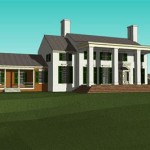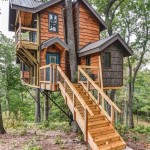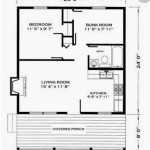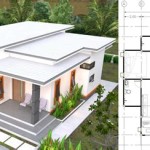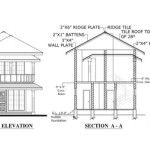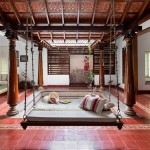Spanish Floor Plans With Courtyard In Front: A Detailed Exploration
Spanish floor plans with a courtyard in front offer a unique blend of architectural style, functionality, and connection to the outdoors. Rooted in the historical housing traditions of Spain and Latin America, these designs emphasize privacy, natural light, and a seamless integration of indoor and outdoor living spaces. The presence of a front courtyard significantly influences the layout and character of the home, creating a welcoming entry and a focal point for both residents and guests.
This article examines the key elements of Spanish floor plans featuring a courtyard in front, delving into their historical context, design principles, benefits, and considerations for implementation. We will explore the common features, variations, and advantages of this architectural style, as well as factors to consider when planning or adapting a home to incorporate a front courtyard.
Historical Context and Evolution
The prevalence of courtyards in Spanish architecture can be traced back to Roman and Moorish influences. The Romans, who ruled the Iberian Peninsula for centuries, introduced the concept of the "atrium," a central open space within a house. This concept was further refined and adapted by the Moors, who introduced intricate tilework, fountains, and lush plantings, creating serene and private oases within their homes. These design elements were crucial in the hot, arid climates of Southern Spain, providing shade, ventilation, and a refreshing retreat from the heat.
When the Spanish colonized the Americas, they brought their architectural traditions with them. Courtyards became a prominent feature in homes and public buildings across Latin America, adapting to local climates and materials. The courtyard served as a central gathering space for families, a place for work and relaxation, and a secure enclosure for animals. Over time, regional variations emerged, reflecting the diverse cultures and resources of each area. The "hacienda" style, for example, often features a large, formal courtyard surrounded by arcades and galleries.
In modern architecture, Spanish-style homes with front courtyards continue to be popular, particularly in regions with warm climates and a strong appreciation for outdoor living. These designs often incorporate contemporary materials and technologies while retaining the essential characteristics of the traditional style.
Key Design Elements of Spanish Courtyard Homes
Several key design elements characterize Spanish floor plans with a courtyard in front. Understanding these elements is essential for appreciating the functionality and aesthetic appeal of this architectural style.
Enclosed Courtyard: The defining feature is the enclosed courtyard located at the front of the house. This space is typically walled or fenced, providing privacy and security. The entrance to the house is usually through the courtyard, creating a transitional zone between the public street and the private living spaces.
Arcades and Portales: Arcades, covered walkways supported by arches, are a common feature in Spanish courtyard homes. These provide shade and shelter from the elements, creating a comfortable outdoor living space. Portales, or covered porches, offer a similar function, extending the living area outdoors.
Fountains and Water Features: Water features, such as fountains and small pools, are often incorporated into the courtyard design. These elements add a sense of tranquility and coolness, creating a refreshing atmosphere, particularly in hot climates. The sound of running water can also mask street noise and create a more peaceful environment.
Landscaping and Planting: Lush landscaping is an integral part of the Spanish courtyard design. Plants provide shade, visual interest, and a connection to nature. Common plants include citrus trees, flowering vines, and drought-tolerant shrubs. The landscaping is often designed to create a sense of intimacy and seclusion.
Tile and Stone: Tile and stone are commonly used in Spanish-style homes, both indoors and outdoors. Terracotta tiles are a classic choice for flooring, while decorative tiles can be used to accentuate walls, fountains, and other features. Stone is often used for walls, paving, and architectural details.
Stucco Walls: Stucco is a traditional wall finish in Spanish architecture. Its textured surface and ability to be tinted in various colors create a distinctive aesthetic. Stucco is also durable and provides insulation, helping to regulate indoor temperatures.
Red Tile Roofs: Red tile roofs are another defining characteristic of Spanish-style homes. The curved tiles create a visually appealing texture and provide excellent insulation and weather protection. The color red is also associated with the Spanish architectural heritage.
Benefits of a Front Courtyard Design
Choosing a Spanish floor plan with a courtyard in front offers numerous benefits, enhancing both the lifestyle and the property value.
Enhanced Privacy: The front courtyard creates a buffer zone between the house and the street, providing increased privacy for residents. The walls and landscaping effectively screen the interior spaces from view, reducing noise and visual distractions.
Improved Security: The enclosed courtyard acts as a security barrier, deterring potential intruders. The entrance to the house is more secure, as it is protected by the courtyard walls. This can provide peace of mind for homeowners.
Outdoor Living Space: The courtyard provides a private outdoor living space that can be used for relaxation, entertaining, and dining. It offers a secluded retreat from the outside world, allowing residents to enjoy the outdoors in comfort and privacy. The inclusion of arcades or portales extends the usable space and provides shelter from the sun and rain.
Natural Light and Ventilation: The courtyard allows natural light to penetrate deep into the interior of the house. The open space facilitates cross-ventilation, helping to cool the house naturally and reduce energy consumption. The placement of windows and doors around the courtyard maximizes the flow of air and light.
Aesthetic Appeal: Spanish-style homes with courtyards possess a unique charm and elegance. The architectural details, such as arches, tilework, and fountains, create a visually appealing and inviting atmosphere. The landscaping adds a touch of nature and enhances the overall aesthetic.
Increased Property Value: The unique design and desirable features of Spanish courtyard homes can increase their property value. The privacy, security, and outdoor living space offered by the courtyard are highly sought after by homebuyers. The architectural style and curb appeal also contribute to the overall value of the property.
Connection to Nature: The courtyard provides a direct connection to nature, allowing residents to enjoy the benefits of outdoor living. The plants, water features, and natural light create a calming and restorative environment. The courtyard can also be used for gardening and other outdoor activities.
Noise Reduction: The walls and landscaping of the courtyard help to reduce noise from the street, creating a more peaceful and quiet living environment. This is particularly beneficial in urban areas or near busy roads.
Considerations for Implementing a Front Courtyard Design
When planning a Spanish floor plan with a front courtyard, several factors must be considered to ensure a successful implementation.
Climate: The climate is a crucial factor to consider when designing a courtyard. In hot climates, the courtyard should be designed to provide shade and ventilation, with strategic placement of trees and water features. In colder climates, the courtyard may need to be smaller and more sheltered to protect it from the elements.
Privacy Needs: The level of privacy desired will influence the design of the courtyard walls and landscaping. High walls and dense plantings can provide maximum privacy, while lower walls and more open landscaping may be more suitable for a more social environment.
Space Requirements: A front courtyard requires a significant amount of land. It is essential to ensure that the lot is large enough to accommodate the courtyard without compromising the size or functionality of the house. The size of the courtyard should be proportional to the size of the house.
Budget: The cost of constructing a courtyard can vary depending on the materials used, the complexity of the design, and the extent of the landscaping. It is essential to establish a budget early in the planning process and to prioritize the features that are most important.
Local Regulations: Local building codes and zoning regulations may impose restrictions on the size, height, and location of courtyards. It is essential to research these regulations before beginning the design process.
Maintenance: Courtyards require regular maintenance to keep them looking their best. This includes watering plants, cleaning tiles, and maintaining water features. It is essential to factor in the time and cost of maintenance when planning a courtyard.
Accessibility: The design of the courtyard should consider accessibility for all residents and guests. Ramps, wider walkways, and non-slip surfaces can make the courtyard more accessible to people with disabilities.
Integration with the House: The courtyard should be seamlessly integrated with the rest of the house. The placement of doors and windows should maximize the flow of light and air and create a sense of connection between the indoor and outdoor spaces.

Plan 46072hc 3 Bed Spanish Style House With Front Courtyard 2357 Sq Ft

Home Plan Casoria Tuscan House Plans Design Sater Collection

Spanish House Plans Monster

Small Spanish Contemporary House Plan 61custom Modern Plans

Tuscan Style House Plan 4480 Villa Roberto

Home Plan Casoria Tuscan House Plans Design Sater Collection

Spanish Colonial Home Plans Sater Design Collection

Spanish Courtyards Homes Photos Ideas Houzz

Home Plan Casoria Tuscan House Plans Design Sater Collection

Small House Plans With Central Courtyards Blog Builderhouseplans Com
Related Posts

